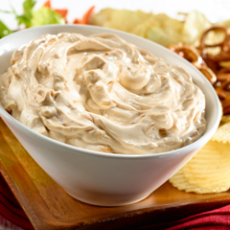A funny thing happens when you become a Cheapskate. You become aware of the food you eat, where it came from, how much it cost. You become aware of just how much you eat and just how much you waste.
It was the waste that shocked me way back when Disaster Struck. Before that day, I'd do the shopping and put food in the fridge or the pantry or the freezer and perhaps use it. Then, on the next shopping day, I'd go to the fridge and find something growing in a container way back on the middle shelf. There would be hairy vegetables lurking in the bottom of the crisper and jars of indescribable in the condiment shelf. Without hesitation I'd toss them, sometimes container and all (those were the times I was just too scared to lift the lid in case the contents escaped and attacked me).
The pantry was worse. I thought I was being a good housekeeper and keeping it in spic'n'span order. I'd wipe over the shelves and stack new tins neatly, pushing older food to the back at the same time.
The freezer was the great unknown. There were piles of mystery packages at the bottom, they'd been there so long the labels had come off (if there were ever labels) and the contents were really a mystery.
My first big shop, the very first once-a-month shop I ever did, I cleaned out that fridge. I emptied that pantry and wiped over every shelf. I even tackled the freezer with a hair dryer and a paint scraper (I do not recommend this method of cleaning the freezer at all - I was on a mission and in a hurry). What I found brought me to tears.
Food. So much food. And all of it past it. Past it's best before date, past it's use by date, just so old it was past it. What a waste. I didn't dare try to work out how much money went into the garbage bin that morning (I hadn't started composting yet), I was too scared.
I vowed then and there to never, ever waste food again. My kitchen became a "no waste" zone.
That was almost 19 years ago. The kitchen is still a no waste zone. I try to use every scrap of food, including the scraps so I get every skerrick of value out of it before it's thrown away.
Egg shells - rinsed, dried and then crushed to use around new seedlings in the garden or added to boiling water to soften and whiten linens
Vegetable peelings - (potato, carrot, pumpkin, onion, sweet potato etc) are composted either in the compost bin or the bokashi bucket
Wilted veggies - tossed into the stock pot for stock, soup or gravy, then strained and put into the compost
Tea bags and coffee pods or bags - tea and coffee bags are composted, coffee pods are emptied into the compost
Over-ripe fruit - mashed and used in baking muffins or cakes or puddings or frozen into cubes to add to smoothies
Banana peels - put into the ferns (they love them)
Fruit and vegetable leaves - cauliflower, cabbage, rhubarb etc. are composted
Celery leaves - used in vegetable soups or frozen and saved to make stock, then strained from stock and composted
Leftovers - leftovers are planned. They become lunches or single serve dinners or mufti meals for weekends.
Bones - from roast chicken or lamb are frozen and saved to make stock, then into the bokashi bucket.
Citrus peels - zested and frozen for cakes and icings or candied to use for a sweet treat or dried and used in pot pourri, or put into white vinegar to make citrus all-purpose cleaner
Syrup from canned fruit - we don't have tinned fruit in syrup very often, but I keep the syrups and use them in cake, muffin or pancake batters instead of milk (gives a beautiful flavour to plain cakes and pancakes) or frozen into cubes for smoothies
Pan juices from a roast - saved to make the best tasting gravy
Fruit peels and cores - composted; apple cores are used to make apple drink in summer
Fat drippings - clarified and used for cooking or put into the compost or bokashi bucket
Nut shells - composted
Stale bread/rolls - frozen to make breadcrumbs or croutons or toasted for garlic bread, made into mock chicken sandwich filling or stuffing for chicken or rolled roasts
Stale cake - doesn't happen around here very often but when it does it's either freshened up in the oven and eaten warm or warmed up and served with custard and fruit for dessert or made into an old fashioned trifle.
I'm sure there are other things we don't waste, as I think of them I'll add them to the list.
On my kitchen bench is a bucket for scraps, it gets emptied into the compost or bokashi every night as a part of the after dinner kitchen clean-up. If it has bones, meat or fat in it then it goes into the bokashi, otherwise I trot down the backyard and empty it into the compost.
So do you have a no waste kitchen? What don't you waste? Share, we want to know!








































.jpg)


